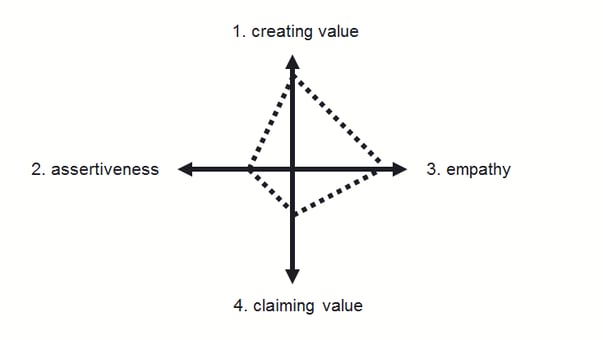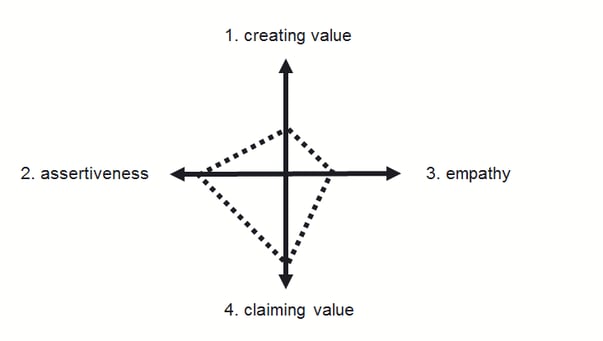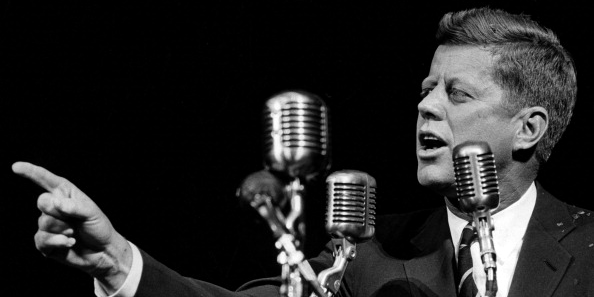
Each year almost 50,000 people apply to pitch their start-up businesses on Shark Tank. Only a few hundred of them are invited to Sony Studios for taping. And barely half of them actually appear on television.
Two of the lucky ones were my former Harvard Business School student Nate Barbera and his classmate Des Stolar. How they beat those odds offer great lessons for anyone pitching an idea, seeking investors, or courting potential business partners. Nate and Des’s was promoting their novel product—Unshrinkit—a potion that restores improperly washed wool garments to their original size.

They had developed it as part of an HBS requirement that MBA students launch a company and secure real customers. At the outset Nate and Des were mixing the stuff in their dorm room sinks. Even after finding an outfit to produce and distribute their product, sales online and in stores were small compared to the potential market. To build a real business they needed publicity—and what better way to get it than an appearance on Shark Tank.
Nate and Des did three things right to get on the show.
First, they understood that they had to pitch themselves rather than their product. After all, the show’s producers are in the entertainment business. They need entrepreneurs with distinctive personalities who will spark reactions from the panel of sharks. In reviewing applications, perhaps the producers expected Nate and Des to be stereotypical know-it-all MBA students, though that’s not how they come across at all. He is an earnest engineer and she is warm, confident, and ultra-smart. The sharks clearly would be intrigued by their personal story.
Second, Nate and Des prepared obsessively, reviewing all the prior episodes to see what makes a winning pitch and—even more important—how the sharks interact themselves. Nate and Des also dissected the pros and cons of various offers they might receive. They even drew elaborate decision trees mapping out different ways the process might unfold. Naturally they focused on Lori Greiner, the “queen of QTV,” a great platform for their household product.
Shark Tank tapings are grueling. What we viewers see is radically edited down. Nate and Des were on stage for two hours and three minutes without a break. When you’re in front of the camera, of course, things happen very fast.

Des recalls being peppered with demanding questions from the sharks and the futility of trying to answer them all. Midst it all, she told herself, “If I pretend that I’ve only heard the question that I like and I answer that, maybe just maybe, it will lead to a follow-up question I like even more.”
Once she did that, there was a “domino effect where every single question aligned with the story that Nate and I wanted to present, and they all thought we were doing well.” But then there was a crisis. Des describes it as “the most nerve wracking portion of the entire session.” Lori withdrew, saying, “I love you guys. I like the product. I don’t think the market size is there.”
In the heat of the moment, under the glare of the TV lights, Nate and Des let go of their plan and deftly pivoted. Lori’s statement was crushing, not only because she had been their top choice, but because her knowledge of home goods could sway the opinions of the other four sharks.
Des kept her composure and asked Lori to explain her thinking. Lori admitted that had been a long time since she had last done her own laundry, but she didn’t think many people would make the mistake of mishandling their woolen garments.
The other sharks—sensing that Lori had misjudged the market—started arguing with Lori, confessing that they make mistakes like that all the time. That allowed Nate and Des to step back and let the other sharks convince themselves of the product’s potential value.
In the end, three of them made offers, with Mark Cuban jumping in at the last moment with the best one. Having watched Cuban in all the prior episodes of the show, Nate and Des knew that he doesn’t like to haggle, so after quickly nodding to each other, they happily said yes.
They were glad to get his endorsement, of course, but even more important making that deal ensured that their segment would air—and not just once, but in reruns, too. Since it first appeared, sales of Unshrinkit are way up and it’s now available in Canada and Europe. (Nate and Des's whole story is also a cornerstone case in my HBX Negotiation Mastery course.)
Few of us will make it to national television, of course, but whenever we’re pitching a new idea, we’d be smart to remember that first and foremost we must win people’s confidence and generate excitement. Though we can’t anticipate everything, diligent preparation actually enhances our ability to improvise when things take an unexpected turn.
This article was originally published on LinkedIn Pulse.

About the Author

Professor Mike Wheeler's current research focuses on negotiation dynamics, dispute resolution, ethics, and distance learning. He is the author or co-author of eleven books, and his self-assessment app—Negotiation360—was released early in 2015. Additionally, Professor Wheeler's new HBX course, Negotiation Mastery: Unlocking Value in the Real World, is now accepting applications.















